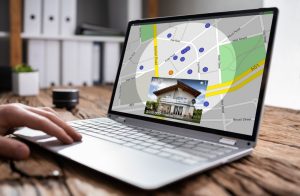When you’re getting ready to sell a home, the process used to be pretty straightforward: spruce up the place, hire a good agent, stage if you could, take photos, list it, show it, negotiate. But increasingly, a lot more is going on behind the scenes — and much of it is powered by data and technology. If you’re a seller (or thinking of becoming one), knowing how “smart data” and tech are shaping the market can give you a real edge.
Why “smart data” matters
By “smart data” I mean more than just “how many houses sold in the last month.” It’s things like: what buyers are actually searching for, how long homes in your neighborhood stay on the market, what features drive higher offers, visual cues (photos, renderings) that affect perception — in other words, a mix of behavioral data, market data and visual technology.
For example: technology now lets platforms and agents pull large amounts of information — not only recent comparable sales, but patterns in buyer behavior, pricing trends, even how images themselves may influence interest.
This matters especially because many markets are competitive, and a home that “looks ready” and “lists smartly” often gets more views and offers.
AI-Powered Visualizers & What They Bring
One of the coolest (and increasingly common) tools in selling homes is the use of AI-powered visualizers: tools that let potential buyers “see” the home differently, or let you present the home in its best light. Here are a few ways these are showing up:
- Virtual staging: Instead of renting furniture and physically staging an empty home (or one that’s heavily lived-in), you can use software to insert furniture, change finishes, present different layouts. Buyers get a sense of the potential without the full cost.
- Interactive design/finishes visualizer: Imagine giving a buyer (or potential buyer) an option to see the same space with two color schemes, or alternate flooring, or different lighting. These tools use AI or other smart rendering tech to switch visuals easily.
- Curb appeal and image analytics: Some advanced tools can analyze how attractive a home appears in photos (or even drone shots) — and identify improvements (e.g., lighting, framing, camera angle) to maximize interest. In fact, a recent academic study shows that image data can noticeably improve forecasting of sale price when combined with more traditional features.
What this all means for you as a seller: the way your home is presented matters more than ever. If buyers can visualize themselves in the home, or imagine possibilities, they engage faster. And many of these technologies let you do that more cost-effectively (and flexibly) than older staging or simply “nice photo” methods.

3D Renderings, Virtual Tours & Immersive Experiences
If visualizers are cool, then step up to 3D renderings and virtual tours. These are no longer just “nice-to-have”; they’re rapidly becoming expected, especially in competitive markets or for higher-end properties.
- A 3D rendering of a home (or key rooms) gives viewers a “walk-through” feel. They can move around virtually, change perspectives, inspect details. This is especially helpful if the property is vacant, under construction, or located in an area where buyers may not be able to visit easily (for example, out-of-town).
- Virtual tours (360° photos, video, or fully interactive apps) allow for remote viewing — again, great for wider exposure.
- For homes under construction or being renovated, renderings allow you to show “this could be your finished home” rather than “this is what it is right now”.
From the data: properties that offer high-quality virtual tours or 3D renderings often sell faster and see more offers, simply because the barrier to engagement is lower (buyers don’t have to show up in person initially) and interest builds sooner.
Putting It All Together: Smart Data + Visual Tech + Listing Strategy
It’s one thing to have the technology; it’s another to use it smartly. Here’s how all the pieces can work together to help you sell:
- Data analysis first – Understand your market: how long homes like yours are staying on the market, what features buyers in your area (and your price‐range) are favoring, what price points trigger more activity. Tools powered by AI can help pull this together quickly.
- Visual upgrade second – Use the visualizer or 3D rendering tools to present the home in its best light. If your home is older or needs some cosmetic refresh, virtual staging may let you show the potential with minimal upfront cost.
- Targeted marketing third – With data you can identify the buyer-profiles most likely to engage with your home, and structure your listing accordingly (photos, tours, wording). Because you’re presenting the home visually and you’re targeting right, your chances of faster traction go up.
- Listing launch and feedback loop – Once the home is live, keep an eye on metrics: how many views, how much time people are spending on the virtual tour, how many showings are booked, how many offers. Smart tools will flag if you’re underperforming and suggest tweaks (more photos, alternate staging, price adjustment).
- Close with confidence – When you have engaged buyers who already “feel at home” via the tour/visuals, your negotiating position improves. The smart data and tech have done much of the heavy lifting in positioning your home in the mind of the buyer.
Why this matters right now
Canada is a geographically vast country with varied markets: urban, suburban, rural. Smart data and tech help level the playing field. A homeowner in a smaller town can present their home as professionally as one in the city. Remote buyers (for second-homes or investment) can tour virtually.
Also, buyers are increasingly tech-savvy: they begin their search online, view video tours, compare neighborhoods via data dashboards. Smart data and visual tools simply help your home speak for itself — attracting the right buyers sooner.
And when markets are competitive, the homes that pop visually and communicate value quickly are the ones that tend to succeed.
Some practical steps for you if you’re selling
- Ask your agent or listing-team: “Do we have a virtual tour / 3D rendering service included?” If not, should you budget for one?
- Check your listing photos: Are they “just okay” or do they present the home at its absolute best? Might virtual staging or high-end photography help?
- Use data: Even a simple look at how long similar homes in your area take to sell, and what pricing strategies worked, can inform how you position your home.
- Highlight the tech in your listing description: For example, “Virtual tour available 24/7” or “Interactive design visualizer lets you imagine your finishes.” This tells buyers you’re modern, flexible and interactive.
- Monitor engagement: Once your listing is live, track how many have viewed the virtual tour, how much time they spend. If it’s low, consider tweaking the visuals or marketing.
Selling a home now isn’t just about “nice photos and open houses.” It’s about using data to understand what buyers want, harnessing visual technology so they can see themselves in the space, and executing a listing strategy that aligns with how people search, view and decide today.
In other words: smart data + 3D/AI visual tools + a strong listing strategy = a better chance of attracting the right buyer, faster, and potentially for more.
If you’re preparing to sell, leaning into these tools doesn’t just give you a “nice upgrade” — it may well be the difference between a listing that lingers and one that sells.


